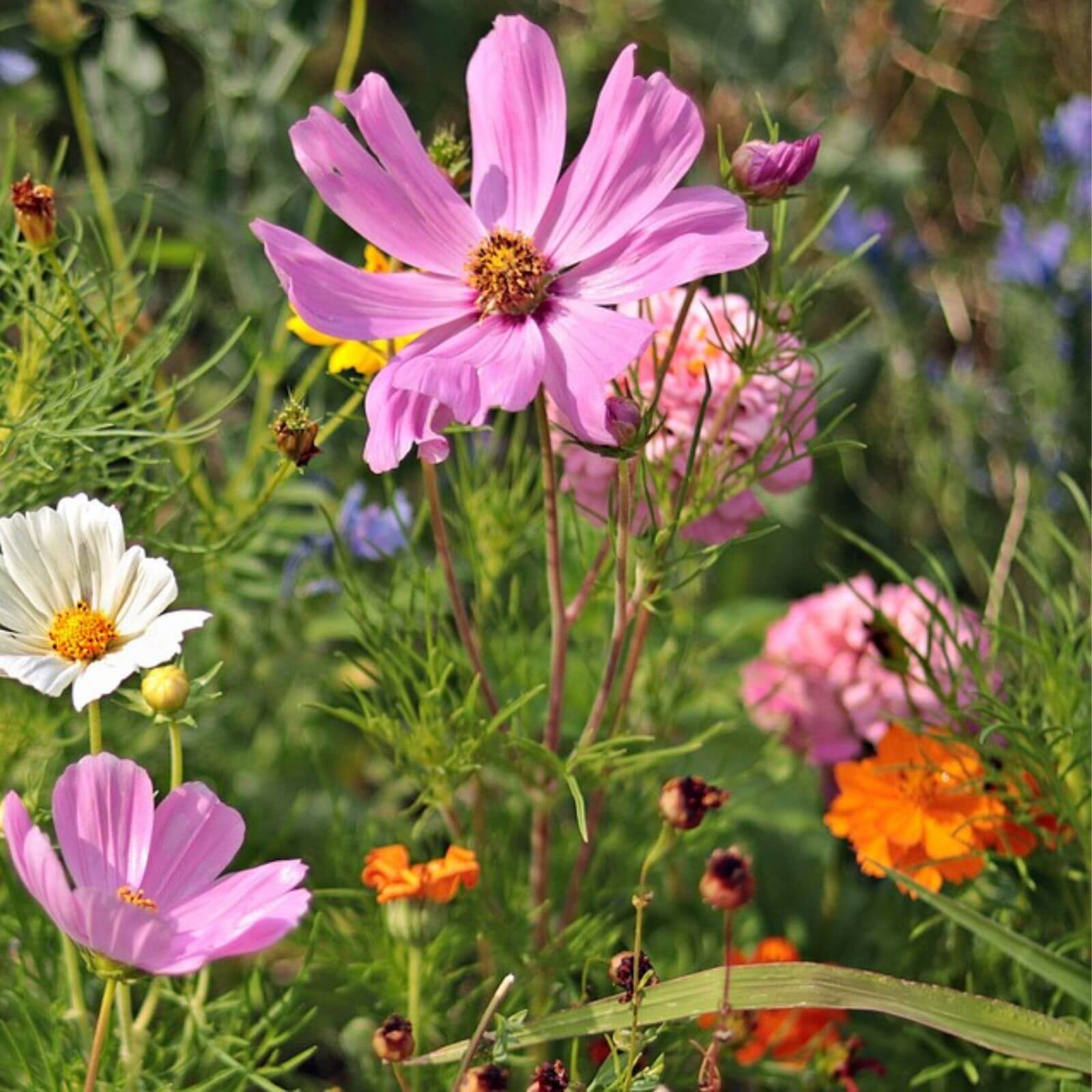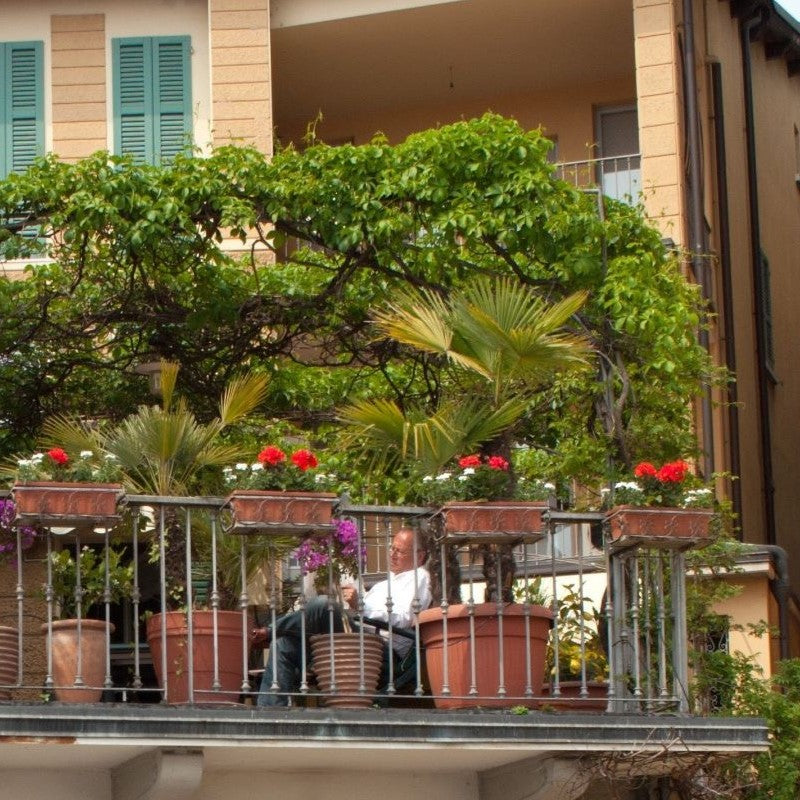Advice & Inspiration
Wildlife Pond Ideas, Plants and Tips to Attract Nature

According to The Wildlife Trusts, ponds play a vital role in the survival of our wildlife, but half a million of these unique ecosystems have been lost over the last hundred years and one in five remaining ponds are thought to be in poor condition. The good news is that you can help reverse this gloomy statistic.
They’re often thought of as purely ornamental features, but get your wildlife pond design right and it can be the most important thing you will ever do for the natural environment. Dig a pond, stock it with the right plants and all manner of wild animals, birds and insects will soon flock to it! Here’s how to make a wildlife pond and get it right from the start.
Jump to:
- When to build a pond
- Where to build a pond
- What size pond is best?
- What type of water is best?
- Choosing your pond liner
- When will wildlife come?
- Attracting bees to your pond
- Attracting dragonflies to your pond
- Attracting frogs to your pond
- Attracting newts to your pond
- Attracting birds to your pond
- Best pond plants for fish
- Attracting mammals to your pond
When should I start my pond?
Any time of year is fine as long as the ground isn’t frozen, but autumn is best as not only can you rely on plenty of rainfall to fill it, but the ground is easiest to dig as it won’t be too wet or too dry.
Where should I put my pond?
Most animals and plants prefer a sunny site. Avoid parts of the garden that are prone to waterlogging or flooding, as there needs to be somewhere for pond water to run off in case it overflows in wet weather. If you’re extra clever about it, you can plan some raised beds at the same time. The soil you dig out will have to go somewhere, so why not use it to grow vegetables?
How big should it be?
The bigger the better! It’s like building roads - the more space you give them, the more they’ll fill it. 2x2m is plenty of space to get the full range of creatures, however, even a small container pond will benefit wildlife, so it's a worthwhile thing to do whatever the size of your space.
For larger ponds, you should include a variety of different depths in the water and ‘shelves’ or different levels in the pond, including shallow shelves around the edges so that small mammals like hedgehogs can get out easily, deeper areas in the middle (60cm is ideal) and shallow water (around 7-10cm) with submerged plants for frogs to spawn in.

What kind of water is best?
If you can wait, it’s best to let the pond fill naturally with rainwater, but if this isn’t possible, water from the water butt or hosepipe is fine. Leave it to settle for about a week for the added chemicals to evaporate before you start planting.
How should I line it?
A pre-moulded or flexible wildlife pond liner is the easiest way to line your pond. Although they’re made of plastic, the environmental benefits will outweigh this, and if you buy the best quality you can find, it will last a lifetime. Make sure you’ve removed any sharp rocks or stones from the base of the hole, to avoid causing cracks or leaks. There’s some good advice on using pond liners here.

Image source: Wikimedia.
When will the animals come?
It won’t be long until word gets out about your pond and the creatures will start to come, with bees and butterflies attracted by the pollen and nectar and birds by the drinking water. If it’s summer, you’ll see insects like water beetles and pond skaters in a few weeks. They’ll attract dragonflies and damselflies, and you may see your first frogs or newts before the year is out.
What plants should I use?
Choosing the right wildlife pond plants is the most important step - generally speaking, it’s best to select native plants, as these species are the ones that UK animals have adapted to live with - but a non-native plant such as a water lily or Louisiana iris can also be of enormous value to aquatic life.
1. Bees and butterflies
Bees, butterflies and other pollinating insects such as hoverflies need pollen and nectar, so what they’re looking for is flowers with a variety of shapes that they can easily access. It’s best to provide a mixture of plant types which flower throughout the year, and a good combination is Marsh Marigold (early spring flowering), Ragged Robin and Water Avens (early summer), Water lilies and Water Plantain (late summer) and Loosestrife (autumn). This will keep a wide variety of pollinators coming all season long.
Plants which are particularly attractive to butterflies include Water Mint, which attracts Tortoiseshell, Peacock and Comma butterflies, and Cuckoo Flower, which is a food source for the Orange Tip butterfly. Sometimes you’ll see honey bees landing on lily pads and other floating leaves, which allow them to drink safely from the pond.

2. Dragonflies and damselflies
Dragonflies and damselflies love a sunny, sheltered pond and will fly long distances to find one! The adults love to perch on tall, upright marginal plants like irises and bulrushes as they wait for passing prey (an ideal opportunity to photograph them). They can sometimes be seen mating on these plants, as well as on water lily pads.
Any plant with stems emerging from the water is useful to dragonflies for laying their eggs - they favour Water Violet and Water Milfoil, with floating plants like Frogbit providing the young larvae with a handy hiding place underwater. Once the larvae are big enough to emerge from the water, they will climb up a tall marginal plant like an iris, a lythrum or a cyperus and hold on there until they shed their nymphal skins to become fully fledged adults. You can find more wildlife pond edging ideas here.

3. Frogs
Frogs make a fascinating addition to your pond, from the excitement of seeing the first frogspawn, to watching the tadpoles develop, and ultimately the adult frogs perched on lily pads in the height of summer. Frogs have been known to inhabit ponds that are only a few weeks old, so they might be some of your first visitors.
To encourage frogs to breed, plant Frogbit (aptly named!), Water Hawthorn or Hornwort, all of which provide excellent cover for spawn and young tadpoles.
As the young froglets start to emerge from the water, they look for marginal plants like Yellow Flag iris, using its rhizome system in which to hide. Low growing plants such as Creeping Jenny will also help to protect them from predators like blackbirds.
Adult frogs need perching places, and the ideal plants are water lilies - Nymphaea alba is a native species, but all of them work well, as do plants which form rafts of stems over the water surface, like Water Forget Me Not, Water Pimpernel, and Water Mint.

4. Newts
Newts become active in spring, when they move from the land to the water during the mating season. They lay their eggs between March and June, in the leaves of rafting or marginal plants, folding a part of the leaf over each egg to protect it. Some of the best varieties to support laying newts are Water Forget Me Not (a particular favourite), Water Mint and Watercress.
Eggs take 10-20 days to hatch, after which you might see newt larvae or tadpoles in the water. The efts (young newts) will then leave the water in June, and this is when they need the cover of bushy pondside plants to hide them from predatory birds: Pickerel Rush, sedges and similar plants are ideal.

5. Birds
Garden birds mainly use ponds for drinking, but you may be lucky enough to see them bathing too! Small birds need cover to hide from predators, and low-growing bushy pondside foliage plants like ferns, Astilbe or Cuckoo Flower are perfect.

6. Fish
There are pros and cons to introducing fish to your pond. On the downside they will eat your plants (but you can choose fast growing plants to counteract this) but on the other hand they will also eat the dreaded algae, keeping your pond water clearer.
Make sure your pond is large enough for the fish to move about freely when they’re fully grown - we don’t recommend adding fish to a patio or container pond.
Oxygenators are vital for healthy fish - they provide food and shelter as well as oxygen, and help to keep the pond clear of algae. Hornwort is an excellent choice, and also provides an underwater spawning habitat for your fish. Make sure your underwater plants don’t get too big for the space, or they could restrict the fishes’ movement through the water.
The other essential for fish is floating plants - these will protect the fish from being spotted by predators like birds and cats, while also shading them from heat and light in summer. Try water lilies or floating foliage plants like Water Lettuce or Water Soldier.

7. Mammals
All garden mammals - including hedgehogs and bats - will enjoy drinking from a pond, so you should take steps to make it safe for them by providing a shallow slope on one side, adding rocks to the pond edges or building a simple ramp for easy access and escape. Like birds and amphibians, small mammals will greatly benefit from the safety of bushy foliage in which to hide at the edges of the pond.
In winter, your pond may freeze over - don’t be tempted to crack the ice as this can cause shockwaves that may injure or kill your fish. Instead, put a small bowl of hot water on the surface of the ice, which will slowly melt a small hole in it. To prevent a frozen pond, try floating a small plastic ball at the shallow edge of the water - it will prevent ice from forming.



















